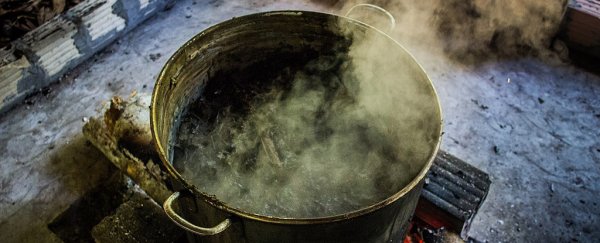For more than 500 years, the mummified remains of several small children frozen high on a volcano in Southern Peru kept a secret record of their final days.
Since the mummies' discovery in the 1990s, researchers worked to unlock ancient children's pasts, unraveling a shocking tale that ends in human sacrifice.
Now a new finding by an international team of researchers adds fresh details to their fate, uncovering traces of material in their hair and nails suggestive of high doses of a psychedelic substance.
Taken in context with historical knowledge of ancient Inca culture, it's possible – even likely – ill-fated victims of what's now known as a capacocha ritual were intoxicated with stimulants, antidepressants, and sometimes alcohol as they knowingly faced certain death.
While it's difficult to know the exact emotions the children might have experienced, whether they were proud, touched with anxiety, or confused and scared, the researchers speculate the use of hallucinogens might have been used to ease the depressive states of the children.
The remains at the center of this latest study were among a small number of mummies uncovered by US explorer Johan Reinhard and Peruvian archaeologist José Antonio Chávez on their expeditions up the Ampato volcano in the Andes in 1995.
It wasn't until 2019 that the bodies, along with a third found on the same plateau, would be subject to a rigorous bio-archeological examination that concluded two were most likely young males, and the third a female.
All three, however, were just 6 or 7 years of age.
One showed signs of malformation in an opening of one of his neck bones, putting him at risk of headaches, sudden loss of consciousness, and even blindness.
Similar remains have been found in various states of preservation all over what was once the domain of the Inca Empire, all evidence of widespread ritualized killings in order to appease or appeal to deities for help and favor.
Most seemed to be from wealthy families, chosen as representatives to act as emissaries. After being led to a place high in the mountains in a journey that could take days, or even months, their end came in any number of ways. Some violent. Some less traumatically, claimed by the extreme cold.
Signs of drug use among the remains were found previously in a handful of remains, specifically pointing to the consumption of coca leaves and alcohol.
Coca leaves have been chewed for thousands of years to reduce hunger and stimulate the nervous system, which wouldn't be out of place for even children embarking on an arduous trek into the mountains.
In some cases, children were found with the leaves still in their mouths, with signs of having consumed them with alcohol in high quantities in the moments leading up to their death.
Yet this more recent finding of metabolites associated with the consumption of a psychedelic brew made from ayahuasca (Banisteriopsis caapi) is strongly suggestive of a ritual intended more to calm than stimulate.
The researchers used mass spectrometry to identify the presence of coca alkaloids and metabolites, as well as harmaline, and harmine in the hair nails of the two Ampato mummies.
Harmaline and harmine are formed out of compounds present in B. caapi, which is typically mixed with other materials to create a brew that induces vomiting, diarrhea, and – significantly – vivid, intense hallucinations.
With tests of the tryptamine N,N-DMT that creates hallucinations coming up negative, it's hard to say with confidence if any concoction the children consumed produced such an effect, let alone strong ones. There was also no evidence of alcohol being consumed, or at least it was taken too late to show up in their hair and nails
This leaves open the possibility the ayahusca wasn't intended to produce strong visions, but to simply reduce their depression and anxiety.
Pulling together scraps of evidence noted by Spanish colonizers or left in archeology and combining it with artifacts left in the anatomy and biochemistry of mummies preserved in the dry cold of the mountains, we're left with a chilling tale.
Stimulated and stupefied, tired and far from home and loved ones, countless esteemed Inca children marched to their deaths, trusting they would leave the world a better place.
They've waited a long time to tell their story. At long last, we're listening.
This research was published in the Journal of Archaeological Science: Reports.
